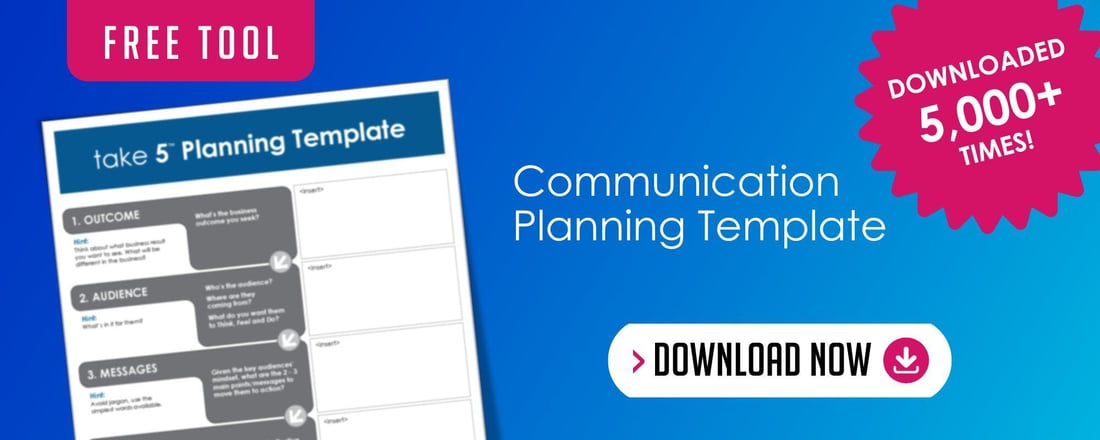
When the pandemic began, organizational leaders were forced to communicate in new ways, focusing on what was essential. Now, as we move to new realities, it continues to be important to stay focused and thoughtfully plan communications. Planning communications is often the key to employees having the information and context they need to help an organization or team achieve its vision and goals. Given a variety of factors, including fewer in-person interactions and the level of turnover that has occurred in many organizations, a recommitment – or reset – to communication planning seems even more essential.
By planning your intended communications, you can build stronger relationships with employees, help them see their role in the journey, and motivate them to contribute to your organization’s success.
4 Step Communication Planning Model
Follow these four steps – Plan, Say, Do and Check – to drive the right behaviors and enhance business performance through your communications with this simple communication planning model.
 PDCA Cycle adapted for communication planning
PDCA Cycle adapted for communication planningStep 1: Plan
Think about the problem/solution or behavior you’re trying to address; set communication objectives with your intended business results and your audience's needs in mind.
Questions to cover in your planning:
- What is the goal or desired outcome of this communication?
- Who will I communicate with and how do they prefer to receive communications
- After this communication, what do I want my audience to Know, Feel, and Do?
- How will I know my communication is successful (e.g., improved survey scores or productivity, behavior changes)?
- How often will I measure my communications (weekly, bimonthly, quarterly, etc.)?
There are a number of ways to plan communication. For additional insight, check out these popular resources:
- [Blog + Planning Tool] Defining Your Outcome as the First Step in Communication
- [Blog + Templates] Internal Communication Plan Guide
- [Blog, Tools + Templates] Change Management Communication Planning Guide
- [Blog + Template] 100 Day Plan for Executive Leaders in New Roles
Step 2: Say
Customize your key messages for impact to respond to employees’ needs and help them know the context and why it’s relevant.
Think about these questions as you customize your messages:
- Why is this topic important for my audience?
- What do I want my audience to do with this information?
- What behaviors do I expect of my audience?
- What can my audience expect of me?
Step 3: Do
Deliver your messages to effectively reach your audience and encourage dialogue.
Your messages should:
- Identify the problem and the outcome/result you want
- Identify your audience(s) and their perspective on the topic
- Be structured to answer what you want employees to Know, Feel and Do
- Be delivered in a way that works for employees
- Include follow-up to determine if employees have questions or ideas
- Connect to the overall company purpose – the “why”
Answer these questions before delivering your messages:
- When will I communicate?
- What is the best place or way for me to communicate this (face-to-face, email, etc.)?
- How will I collect feedback or ensure my audience understands the communication?
- Who do I need to equip or prepare to help reinforce these messages (e.g., leadership, managers)?
Step 4: Check
Evaluate communication effectiveness so you know what’s working and how to continuously improve. Check back in 30 days, then 90 and beyond, to review the progress your goal is making. Adjust course as needed.
What opportunities do you see to better plan your communications?
—David Grossman
Map out your communication, whether it's to a colleague, your team, or your organization. Being more purposeful in your communications can take as little as five minutes. Click below to download the free Take 5 Planning Template today!


Comments on this post